#leslie fay
Explore tagged Tumblr posts
Text

US Vogue February 1974
Leslie Fay S/S 1974
Model : Karen Graham
vogue archive
#us vogue#february 1974#fashion 70s#spring summer#printemps été#leslie fay#karen graham#vintage vogue#vintage advertising#vintage fashion
11 notes
·
View notes
Text
Old Hollywood stars on the bicycles
















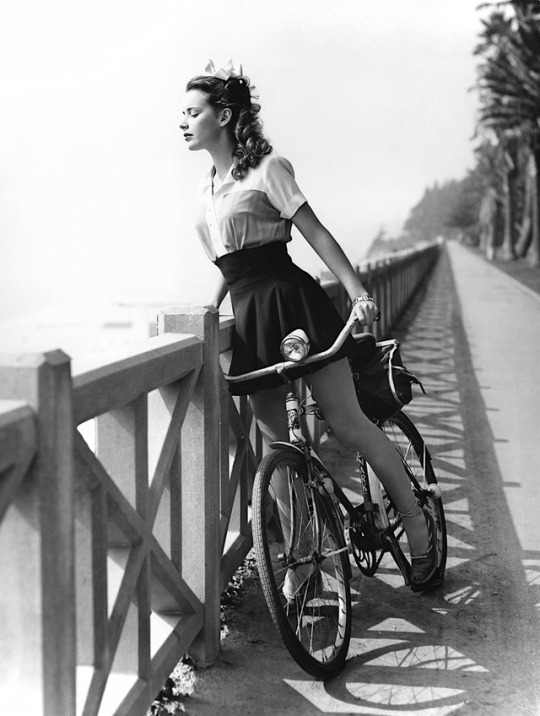











#charlie chaplin#audrey hepburn#paul newman#bing crosby#grace kelly#mary pickford#buster keaton#gary cooper#ginger rogers#fay wray#clark gable#glenn ford#olivia de havilland#ingrid bergman#bob hope#fred astaire#susan peters#joan crawford#david niven#katharine hepburn#errol flynn#rita hayworth#tyrone power#leslie howard#cary grant#joan blondell#gloria blondell#peggy dow#james stewart#humphrey bogart
43 notes
·
View notes
Text


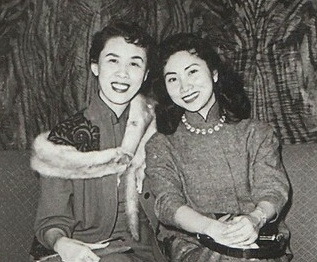
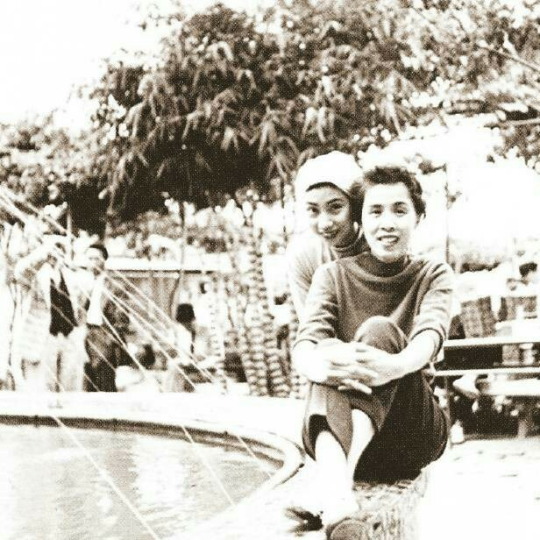

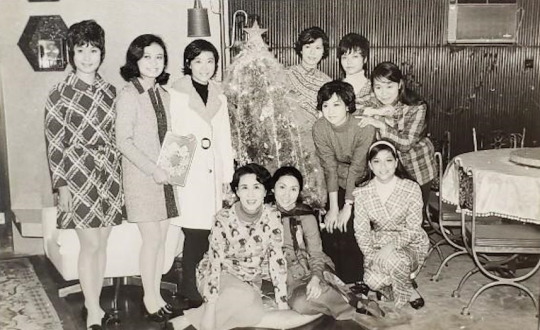


Female Queer Icons of Hong Kong // Yam Kim Fai (任劍輝) and Pak Suet Sin (白雪仙)
Photo 1: Promotional photo for 1955 contemporary movie The Model and the Car (玉女香車) (no video available) (Source: LCSD Museum Collection Search Portal)
Photo 4: Photo from Sin Fung Ming Opera Troupe's 1958 trip
Photo 5: Photo from a 1962 newspaper feature on Yam, Pak, and others at their (?) summer villa in Central, Hong Kong
Photo 6: Christmas celebrations with Yam, Pak, and their protégés of the Chor Fung Ming Troupe
Far and away the most iconic duo in Cantonese opera, Yam Kim Fai (任劍輝) and Pak Suet Sin (白雪仙) – commonly referred to simply as Yam-Pak (任白) – were famed for their partnership both on and off the stage… Click below to learn more!
Edit on 28/07/2023: Updated to link to a photo of the entrance to the Hong Kong Heritage Museum’s Pop Culture 60+ exhibit, and to add information regarding Yam and Pak's marriage status.
Iconic? How?
Yam-Pak are the face of Cantonese opera; you can't talk about the latter without mentioning the former. It's to the point where a gigantic picture of them graces the entrance to the Hong Kong Heritage Museum’s permanent exhibition on Hong Kong pop culture’s evolution across the past 60 years (“Hong Kong Pop 60+”) - they are the first thing you see upon entering!
Best known as the originators - with Yam playing the male leads and Pak the female leads - of five masterpieces of Cantonese opera, namely:
1. Princess Cheung Ping (帝女花) 2. The Legend of the Purple Hairpin (紫釵記) 3. The Dream Tryst in the Peony Pavilion (牡丹亭驚夢) 4. The Reincarnation of Lady Plum Blossom (再世紅梅記) 5. Butterfly and Red Pear Blossom (蝶影紅梨記) (Note: Princess Cheung Ping, Purple Hairpin, and Butterfly and Red Pear Blossom were made into abridged movie versions, with the Sin Fung Ming troupe members reprising their roles from the theatre productions. Also, the "Fragrant Sacrifice" (香夭) duet from Princess Cheung Ping (movie clip) is one of - if not the most - famous songs in Cantonese opera.)
Yam and Pak were the leading pair and co-founders of the legendary Sin Fung Ming Opera Troupe (仙鳳鳴劇團; 1956-1961), which is widely held to have pushed Cantonese opera forward as an artform due to Pak and scriptwriter Tong Tik Sang’s (唐滌生) emphasis on poetic libretti and adapting source material from Chinese literature and history. (Note: it has been common practice since the 1930's for Cantonese opera troupes to be founded by key actor(s).)
They were also very active in the Hong Kong film industry in the 1950's, being paired in over 40 movies together across roughly 8 years. One of those – the aforementioned Butterfly and Red Pear Blossom (蝶影紅梨記) – is the sole Cantonese opera movie on the Hong Kong Film Archive’s 100-Must See Hong Kong Movies list (IMDB list / archived version of the official PDF). It's a well-deserved inclusion - check out this beautifully-shot dance scene.
Even their post-retirement activities had a significant effect on the industry! In the early 1960’s, they held auditions for prospective students and provided - for free - systematic, hands-on training to those who passed; Yam and Pak even hired other veterans to teach skills they personally were not as familiar with. Prior to this, apprentices were expected to learn primarily from observing their masters, and to pay handsomely for the privilege. Yam-Pak’s methods proved exceedingly effective: the Chor Fung Ming Opera Troupe (雛鳳鳴劇團; 1963-1992) starring their apprentices reigned supreme in the 1970’s-1980’s. Following this success, Cantonese opera institutes - most notably the major 1900s-era guild, the Chinese Artists Association of Hong Kong (八和會館) - started to offer systematic coaching to young hopefuls in the 1980's.
Okay, so why are they queer icons specifically?
The lazy answer is that they're queer icons because nearly all of Yam's roles were male, so Gender is involved by default, and since most hit Cantonese operas of the time were romances, that means you get to see two female actors performing being in love onscreen (and also on stage, but there aren't any video recordings from back then). So far, so Takarazuka Revue.
Female actors playing male roles in Cantonese opera To give some context, each Cantonese opera performer specialises in one of four major role-types, and Yam was a sung (生) - i.e. an actor specialised in playing standard male roles. Female sung were fairly common in the 1910's-1930's due to women being banned from performing with men during that period, but when the ban lifted in the mid-1930's, many troupes shifted towards cis-casting. Yam was pretty much the only one whose popularity survived the transition. Just take a look at the huge number of Cantonese opera movies produced during the 1950’s-1960’s – you’ll be hard-pressed to find a female sung other than Yam, let alone one with top billing. Happily, thanks to Yam's immense popularity, her profilic film career (over 300 movies!), and the prominence of Sin Fung Ming works in the Cantonese opera canon, there has been a resurgence in female sung which endures to this day. Two noteworthy examples are Yam's protégé Sabrina Lee/ Loong Kim Sang (龍劍笙) - a star in her own right - and Joyce Koi/ Koi Ming Fai (蓋鳴暉), one of the biggest names still active in the industry. (Note: perhaps due to cinema being more "realistic" in nature, Yam's early movies often involved her playing female characters cross-dressing as men, including in some Cantonese opera movies. However, she received increasingly more male roles as her fame grew, and from the mid-1950's onwards she was playing male characters onscreen nearly exclusively-- even in non-Cantonese opera movies! See Photo 1 above.)
What sets Yam and Pak apart is that they were particularly known for their chemistry. Long before Sin Fung Ming's formation in 1956, the advertising copy for their first Cantonese opera movie together - Frolicking with a Pretty Maid in the Wineshop (酒樓戲鳳, 1952) - declared "Only this movie has Yam-Pak flirting on the silver screen" (source - 華僑日報 1952/05/23-26). And indeed, they were popular for their flirtatious duets: their Cantonese opera works invariably contained at least one, and such scenes made it into some of non-Cantonese opera (i.e. "contemporary") movies too. In fact, there are not one but two contemporary movies where Yam and Pak's characters are not paired up and yet still sing a duet together in such a way that their significant other(s) become convinced that the two are in romantically interested in each other - see 1952's Lovesick (為情顛倒) and 1956's The Happy Hall (滿堂吉慶) - a weirdly specific situation which doesn't crop up in the other, non-Yam-Pak movies I have seen.
Speaking of contemporary movies, let's talk about a certain plotline that keeps cropping up in works featuring the both of them and where Yam plays a woman! Six of the eleven movies which fit that criteria involve Yam's character cross-dressing as a man (a common characteristic across Yam's handful of female roles), and Pak's character falling for her. Nothing ever comes of it, of course, but, um. It was certainly a trend. Actually, even their very first movie together - 1951's Lucky Strike (福至心靈) - falls into this category.
Such storylines, and the emphasis on their chemistry, are particularly interesting given that both Yam and Pak remained ostensibly unmarried throughout. This was unusual for female performers of their stature, who tended to wed in their twenties, often to fellow-actors or wealthy men (e.g. Hung Sin Nui/紅線女, Fong Yim Fun/芳艷芬, and Tang Pik Wan/鄧碧雲)... In contrast, by the time Yam-Pak retired from the stage in 1961, they were both over 30 years old and without husbands.
Also, did I mention they were popularly believed to be living together? There doesn't seem to be any conclusive evidence either way... although it's a little strange that separate newspaper pictorials depicting "Yam at home" and "Pak at home" seem to be of the same location... however what is conclusive is that they did spent a lot of time together offstage. Pak has talked about how when they had no guests over, Yam would watch TV by herself while Pak was in the living room (source - p93), and protégé Mandy Fung/ Mui Suet Sze (梅雪詩) has said that Pak would sometimes cook for Yam at home (source - 03:53~). They would also celebrate birthdays, New Year's, and Christmas together (see Photo 6 for an example of the latter).
Shortly after Yam's passing in 1989, Pak set up the Yam Kim Fai and Pak Suet Sin Charitable Foundation (任白慈善基金) to support the arts and provide welfare for the elderly. In 1996, Pak made a large donation to Hong Kong University, resulting in one of the buildings being renamed Yam Pak Building (任白樓) in thanks (source).
Thanks for reading! Please feel free to DM me or send an ask if you have any questions, or are just interested in learning more.
If you made it here, have this bonus piece of trivia - Yam and Pak were also well-acquainted with Hong Kong's preeminent queer icon, Leslie Cheung (張國榮), who was a massive fan of theirs. Sadly there don't seem to be any pictures of them before Yam's passing, but here's one of Pak (centre) having afternoon tea with Cheung (left) and his long-term romantic partner Daffy Tong (唐鶴德) (right) at the Cova cafe in the Pacific Place shopping mall.

#wlw recommendations#sapphic#lgbtq#asian lgbtq#hong kong#theatre#cantonese opera#chinese opera#yam kim fai#leslie cheung#pak suet sin#yampak#yambak#pak sheut sin#bak sheut sin#hong kong queer icons#not me hastily adding tags because i keep forgetting certain ones
223 notes
·
View notes
Text

The Most Dangerous Game (1932) - Trade ad
#the most dangerous game#fay wray#joel mccrea#leslie banks#1932#1930s movies#irving pitchel#classic horror#trade ads
107 notes
·
View notes
Text

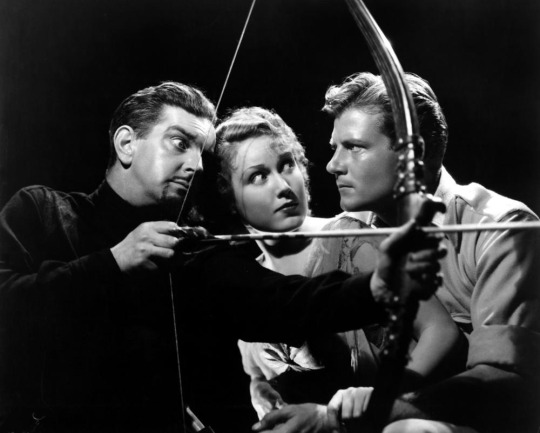
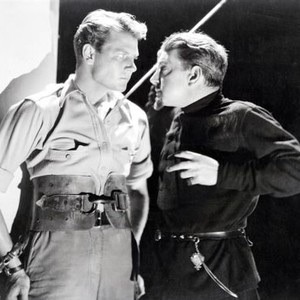
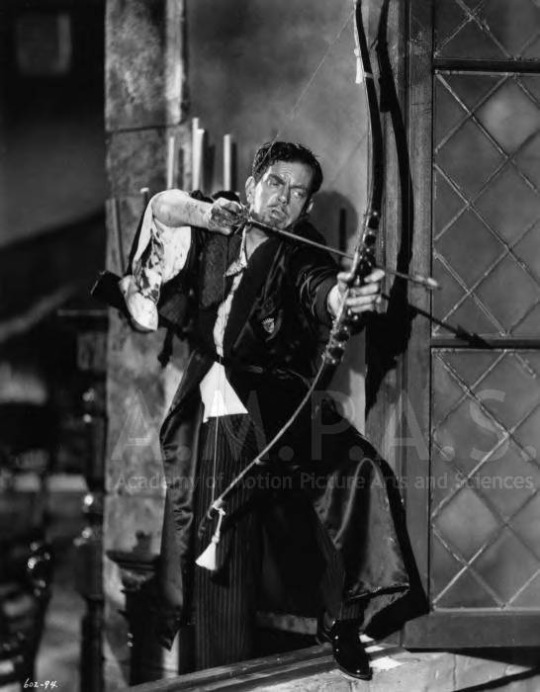

Leslie Banks, Fay Wray, and Joel McCrea in THE MOST DANGEROUS GAME (1932), directed by Irving Pichel, Ernest B. Schoedsack
38 notes
·
View notes
Text













queen bee, ranald macdougall 1955
#queen bee#ranald macdougall#1955#joan crawford#william leslie#lucy marlow#betsy palmer#barry sullivan#fay wray#hamlet#foolish wives#die macht der gefühle#strohfeuer#material#buw#flyweight
5 notes
·
View notes
Text

#Tammy and the Bachelor#Debbie Reynolds#Walter Brennan#Leslie Nielsen#Mala Powers#Sidney Blackmer#Mildred Natwick#Fay Wray#Louise Beavers#Joseph Pevney#1957
5 notes
·
View notes
Text
BLOGTOBER 10/17/2023: THE MOST DANGEROUS GAME (1932)
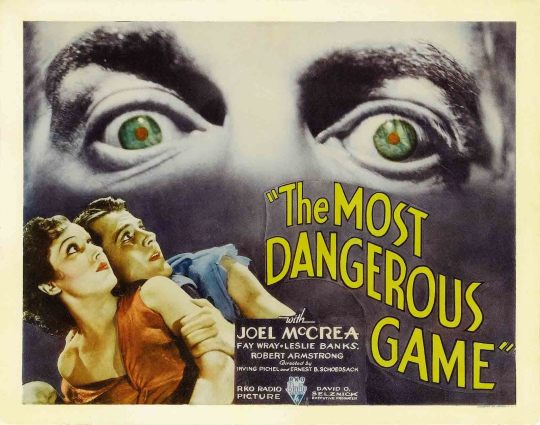
I'm probably not supposed to say this, but I find this movie pretty silly. I'd never seen it before, even though it's one of the most referred-to titles alive. And I mean it's from Ernest Schoedsack who co-directed KING KONG, so what could go wrong? But I have to be honest, I'm not attracted to its boys' adventure vibrations; Joel McCrea is strutting around being the World's Most Awesomest Dude, with everybody including the villain slavering for his approval, and I'm just sitting there thinking, Can't some weasels come and rip this guys' flesh already?
I don't think my problem is just that, like everyone else, I know the twist and the ending already. I've seen lots of very old, very famous movies pretty late in life, and I treasure the discovery of how great and powerful they are despite being so familiar. THE MOST DANGEROUS GAME does face one specific contextual challenge, which is that this Blogtober season I also watched SVENGALI and DR. JEKYLL AND MR. HYDE (1931), and to be blunt about it, Leslie Banks is nowhere near the class of Fredric March and John Barrymore in terms of crafting a charismatic, sexy, scary, physically impressive screen villain. Joel McCrea is perfectly bland as the movie's flawless hero, who doesn't so much learn an ironic lesson about his hunter's hubris as he proves that he can do anything he wants in any situation, especially when he's up against a bunch of swarthy foreigners who wish they could be him, so who really cares. Fay Wray flops around being completely helpless and witless, with this look on her face all the time
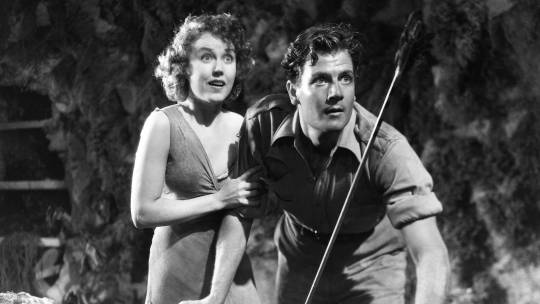
while the music goes, "Duh nuh nuh nuh nuh NUH. Duh nuh nuh NUH NUH NUH! DUH NUH NUH NUH NUH NUH!!!" The jungle sets are admittedly beautiful and fun, but I have to deal with all these boring jerks if I want to enjoy them, so that's too bad.
What would have brightened this movie up for me is if it fulfilled on its consistent teasing that the evil Count Zaroff has a super fucked up trophy room with all the most dangerous games that he's murdered stuffed and mounted in it...but apparently whatever version of this once existed was so upsetting to test audiences that it basically survived only in the viewer's imagination. Here are some pretty concise notes on that, if you're interested. But obviously I don't have much of interest to say about this movie. I know it's a classic and all, but let's just say that if you've ever suspected that I'm here to toe the party line on all the great classics to try to sound smart and sophisticated, well, you'd be wrong!
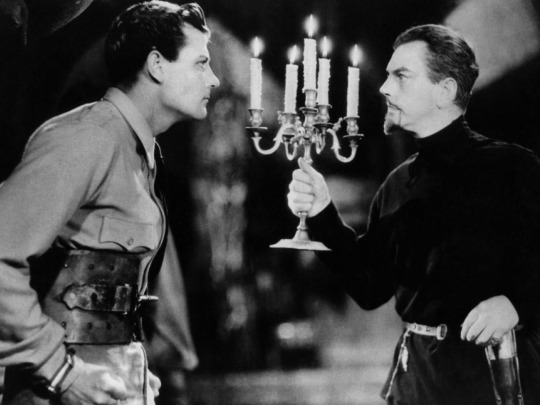
#blogtober#2023#the most dangerous game#1932#ernest b. schoedsack#joel mccrea#fay wray#leslie banks#adaptation#horror#thriller#action#pre-code
3 notes
·
View notes
Text

🏳️🌈Day 26: Tony & Leslie (Happy Together)
FOUR DAYSSS MORE AND WE ARE OVER LETSGOOO i haven't seen this movie either:-) My coloring so lame sorry
HAPPY PRIDE 🏳️🌈🏳️🌈
Remember: i'm drawing a lgbt canon couple daily for pride month, follow me or check my profile to see the rest!🏳️🌈 Thanks for the support!
#happy together#1997#春光乍洩#fanart#tony leung#leslie cheung#lai yiu-fai#ho po-wing#Chūnguāng Zhàxiè#hongkong#chinese chinese film#chinese movie#asian#asian movie#wong kar-wai#pride month#pride#lgbt couple#lgbt movie#lgbt representation#lgbt characters#lgbt#gay#gay pride procreate#art#digital art#digital drawing#artists on tumblr#digital painting#illustration
4 notes
·
View notes
Text
THE MOST DANGEROUS GAME Hunting humans in 1932 - free to watch online
The Most Dangerous Game is a 1932 action horror film about a psychotic big game hunter who hunts stranded human beings on his private island. Directed by Irving Pichel and Ernest B. Schoedsack (King Kong, 1933) from a screenplay by James Ashmore Creelman based on the 1924 short story of the same name by Richard Connell, the first film version of the story that has formed the basis for a plethora…

View On WordPress
#1932#Ernest B. Schoedsack#Fay Wray#free on YouTube#free online#Joel McCrea#Leslie Banks#Robert Armstrong#The Most Dangerous Game
1 note
·
View note
Text
The Most Dangerous Game (1932) | Episode 375
New Post has been published on http://esonetwork.com/the-most-dangeroous-game/
The Most Dangerous Game (1932) | Episode 375
Jim discusses a classic suspense-horror film from 1932 produced and directed by the same team who produced “King Kong” – “The Most Dangerous Game,” starring Joel McCrea, Fay Wray, Robert Armstrong, Leslie Banks, Noble Johnson and Steve Clemente. A big game hunter finds himself stranded on a remote island following a shipwreck. The estate on the island is owned by an eccentric hunter who has a particularly dangerous appetite. Find out more on this episode of MONSTER ATTACK!, The Podcast Dedicated To Old Monster Movies.
#1932 Horror Film#ESO Network#fay wray#geek podcast#Jim Adams#Joel McCrea#Leslie Banks#Merion C. Cooper#Monster Attack!#nerd podcast#Noble Johnson#Old horror film#robert armstrong#Steve Clemente#The ESO Network#The Most Dangerous Game#The Podcast Dedicated To Old Monster Movies
0 notes
Text

US Vogue October 1, 1971
Donna Mitchell wears a long red shirt dress, in Qiana nylon. By Leslie Fay. Short Dynel wig by Halston for Abbott Tresses; arranged by Franklyn Welsh. Barrette, Therese Ahrens, evening clutch, Walborg, red tights, Belle-Sharmeer, shoes, David Evins.
Donna Mitchell porte une longue robe-chemise rouge, en nylon Qiana. Par Leslie Fay. Perruque courte Dynel de Halston pour Abbott Tresses ; arrangée par Franklyn Welsh. Barrette, Therese Ahrens, pochette de soirée, Walborg, collants rouge, Belle-Sharmeer, chaussures, David Evins.
Photo Richard Avedon vogue archive
#us vogue#october 1971#fashion 70s#fall/winter#automne/hiver#ready to wear#prêt à porter#leslie fay#donna mitchell#richard avedon#david evins#belle-sharmeer#dynel#walborg#vintage fashion#vintage vogue
12 notes
·
View notes
Text






Tony Leung as Lai Yiu Fai & Leslie Cheung as Ho Po Wing
Happy Together (1997) dir. Wong Kar Wai
#happy together#leslie cheung#tony leung#cdramasource#asiandramasource#dailyasiandramas#filmtvtoday#filmgifs#dailylgbtq#perioddramaedit#userbbelcher#cdramaedit#lextag#tusermona#userjap#samblr#useryd#udeokmis#cinematv#*_mine_*#chinese movies#cmovie#cfilm#wong kar wai#hong kong cinema#cheung fat chung#leung chiu wai#春光乍洩
569 notes
·
View notes
Text
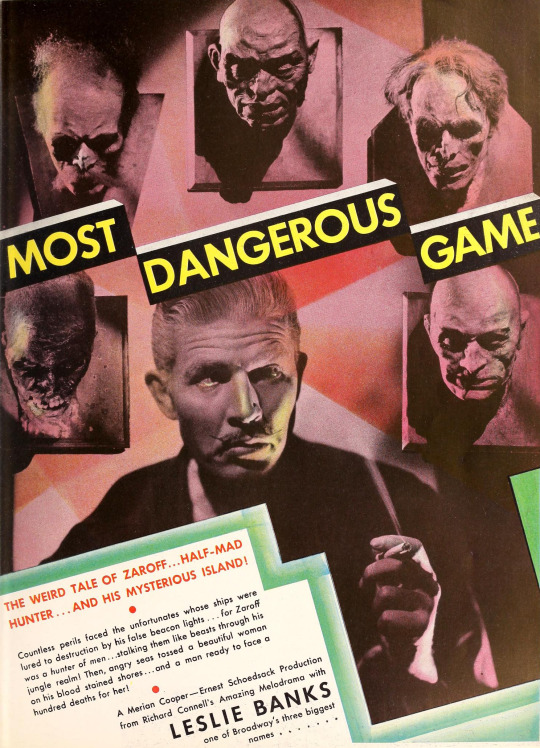
The Most Dangerous Game (1932) - Trade ad
#the most dangerous game#fay wray#joel mccrea#leslie banks#1932#1930s movies#ernest b. schoedsack#irving pitchel#classic horror#trade ads
38 notes
·
View notes
Text
SandRay are an homage to Wong Kar-Wai's Happy Together and in this essay I will..
...actually explain it because I see people catching his homage's to Western queer media, but not really his shout outs to Eastern queer media.
I assumed there would be allusions to Happy Together when I first saw the trailer, but this last episode centered around Ray really cemented it for me. After all, why would P'Jojo reference all these Western queer shows and not talk about what is probably the most iconic piece of Eastern queer media ever?
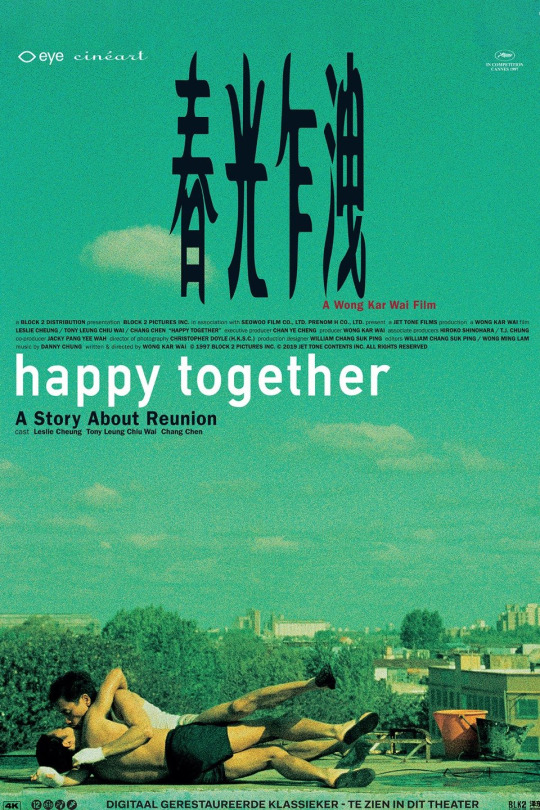
Wong Kar-Wai & Happy Together
For some background information, Wong Kar-Wai is a famous and insanely influential Hong Kong filmmaker. If you're a film nerd, you probably know who he is and recognize his style. If you like film and metas, I would recommend watching some of his stuff because afterwards, you'll realize just how much influence he still has on modern media, especially in Asia. Stylistically, he's known for rich color grading; thematic usage of music; an unending sense of nostalgia, heartbreak, and missed opportunities; and dialogue that mean nothing on the surface because everything meaningful is boiling just under, left unsaid (If you've watched Everything Everywhere, All At Once, the entire actress universe sequence was an homage to Wong Kar-Wai). His actors always do a phenomenal job because so much of what they need to portray can't be communicated through words. It makes sense why SandRay, aka FirstKhao, were chosen to represent Happy Together as they are the strongest actors out of the group.
Happy Together, simply summarized, is about two men, Ho Po-Wing and Lai Yiu-Fai, who are in a very tumultuous relationship. They end up in Argentina because they wanted to visit the waterfall that's on a lamp that they own. They get lost, end up using all their money, and have to figure out a way to get back to Hong Kong. While there, they break up, get back together, and break up again.
The movie was released in 1997 and is still ranked as one of the best queer movies of all time. The two main characters are played by Tony Leung and Leslie Cheung. You might recognize Tony Leung as Simu Liu's dad in Shang-Chi. Leslie Cheung was in Farewell, My Concubine, and was famously a bisexual man with a long term male partner. This is significant because it was virtually unheard of to be out and open at that time (he made his relationship public in 1997 though he had mentioned bisexuality in earlier years), especially in Hong Kong which was, and still is, very homophobic. Leslie received a lot of hate for his sexuality and androgyny. (If you're interested in learning more about Leslie as a queer Asian figure, this is a good video essay that goes over his work and his life).
Sand as Lai Yiu-Fai
Fai's, and in turn Sand's, character can be summed up by one line, "One thing I never told Ho Po-Wing was that I didn't want him to recover so fast. Those were our happiest days."
Both Fai and Sand are very static, straightforward characters. They stay above board for the most part and work a variety of jobs to survive. They have their morals about what is right and wrong, which unfortunately is both of their downfalls.
In Happy Together, Wing breaks up with Fai because he is bored with the relationship. He basically says, "I'm bored being with you. Let's break up. If we happen to meet again, we can try again." Then he leaves Fai stranded on the side of a highway.
Later, he reappears in Fai's life. The first encounter is a fight, much like Sand and Ray's first meeting in the bathroom. The second encounter is because Wing gets beaten up. He goes to Fai because he knows Fai will feel obligated to take care of him and he does. It becomes the beginning of their rekindled relationship.
Similarly, Sand has a strong sense of obligation. There are already metas out there about how Sand has a bit of a hero complex. He sees Ray too drunk to drive and he had to step in. He doesn't just take the keys and order a taxi. No, he takes the keys and drives Ray. Sand sees Ray being all sad and pathetic and he can't stop himself from helping. It makes him feel useful. It makes him feel needed.
Both of these men are caretakers. They show affection by providing care. Sand ends up cooking for Ray just as Fai cooks for Wing even when he's sick. As an added bonus, they both make fried rice.


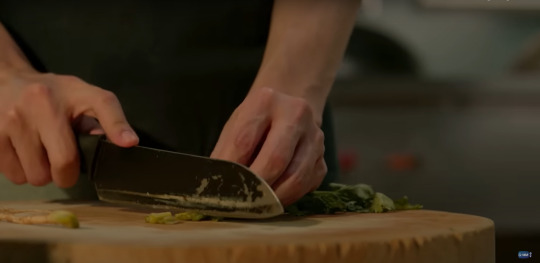

Both Sand and Fai are characters that stand completely still. Ray and Wing always know where to find them. Sand can always be found at YOLO and Fai is at his apartment. Because of this, Ray and Wing come and go as they please. They know that Sand and Fai will take them back...until they finally don't.
Ray as Ho Po-Wing
Starting on a base level, both characters are bratty, needy, promiscuous, spoiled, and selfish. But most importantly, they both share a love of fluffy cardigans.

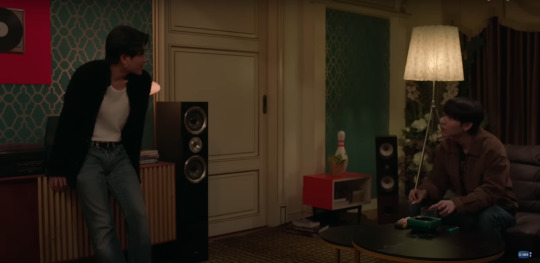
(I also have a theory they keep putting Ray in wife beaters as an homage to the 90's HK cinema style because otherwise...I just don't understand why, as a rich asshole, he's always in wife beaters. By Thai BL logic, he should be in shirts with too many buttons unbuttoned.)
Wing and Ray are both the ones controlling the pace and direction of the relationship. They come when they need someone to nurture their wounds, both physically and metaphorically. They leave when they're bored or have things they deem more important. They both initiate intimacy and won't take no for an answer.


Wing does this by first trying to join Fai on the couch and then chasing after him to the bed and begging him to let them sleep together.
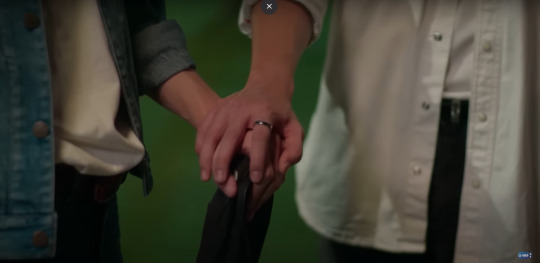
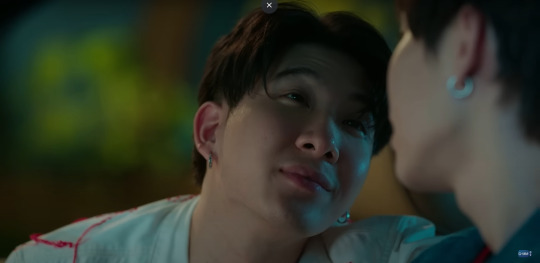
Ray does it by continuously getting Sand to get in the car with him and then using his puppy dog eyes.
They are both also very, very pouty.
Wing's line is "We could start over". He says it every time he comes back after he's the one that ends the relationship. Fai always fights taking him back, but he always does it anyway.
Ray doesn't really have a line yet (unless you count his "na na naa~"s) but he bats his eyelashes and so far Sand has given into him every time. Sand keeps trying to set boundaries, but the moment Ray begs a little bit, Sand crumbles like a house of cards and lets Ray have whatever he wants.
Relationship Parallels
Wong Kar-Wai is known for making movies about star crossed lovers who are meant for each other, but aren't meant to be together.
Like Wing and Fai, Sand and Ray fill in each other's cracks in a way that complements each other. However, because of the nature of the cracks themselves, them complementing each other is exactly what makes the relationship so toxic. One stays and one goes. One takes and one gives. One is steady and one is flighty.
Most of what I wanted to say about the parallels between their relationships is in the character comparison. What I'm more interested in is the future of SandRay's relationship, especially if they continue to parallel Wing and Fai's in Happy Together.
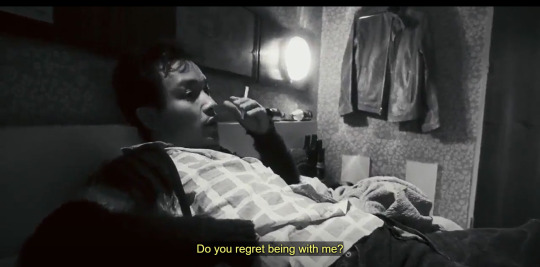



Obviously, Wing and Fai don't end up together at the end. It wouldn't be a Wong Kar-Wai movie if they did. What is interesting is that Fai's relationship with Wing eventually pushes him into becoming something angry and spiteful. Once Wing heals, Fai knows that he'll become bored and want to leave. In an attempt to get him to stay, he steals and hides Wing's passport which is insane because they are both gay men stuck in a foreign country where they don't speak the language.
Wing, of course, leaves anyway.
There is also a third character, Chang, whom Fai ended up liking. These new feelings are what eventually pushes Fai to leave Argentina and move on from Wing and move on with his life.
The question is, if SandRay follows that same path as Happy Together, what will be the passport that Sand tries to hold over Ray and who will be Sand's Chang?
Stylistic Parallels
Smoking
Making Ray and Sand smoke is definitely an homage to Happy Together with the added bonus of being a metaphor. For the most part, we rarely see characters, especially main characters, smoke in Asian media because smoking is reserved for 'bad' characters.
Cigarettes in Happy Together represent boredom. Fai and Wing smoke at the beginning before they rekindle their relationship because they are just moving through life. Once Fai and Wing get back together, cigarettes stop making an appearance. It isn't until their relationship started deteriorating that we see the men smoking again.
This can also be said about Sand Ray's relationship. They started their 'involvement' with cigarettes. However, the last time we actually see them smoking is in ep 2 right before they hook-up. Since then, we have not seen either of them smoking. This probably means that we'll see one or both of them smoking again when their relationship starts to break down.
(In the preview for ep 5, there is an ashtray in the background on the balcony so let's see if Boston finding out about them is a catalyst for them to start breaking down.)
And of course, there is the added homoeroticism of asking for a light.
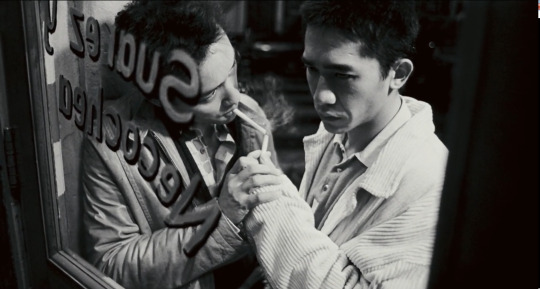

Ray's Opening and Closing Scenes
Ray's episode is really what made me go "I see you P'Jojo".
Ray's episode starts with a shot of him isolated and in emotional pain. The camera is claustrophobically close and it keeps moving around. He has a little voiceover opening. It's calm, it's contemplative, it's a little existential, and it is irrevocably sad. If that is not a Wong Kar-Wai staple, then idk what is. Even the song that starts playing gives me 80s, 90s Cantopop vibes.
Ray talks about how Mew being his emergency contact and the one he goes to. Fai talks about how Wing always comes back to him and says "Let's start over".


The movie and the episode ends with both of them once again isolated, alone. They've been through an emotional journey and they've technically moved on. But there's always the idea of not being able to fully let go in Wong Kar-Wai's movie. So just like how Fai has physically removed himself from Wing, but not emotionally, has Ray actually fully removed himself from Mew?
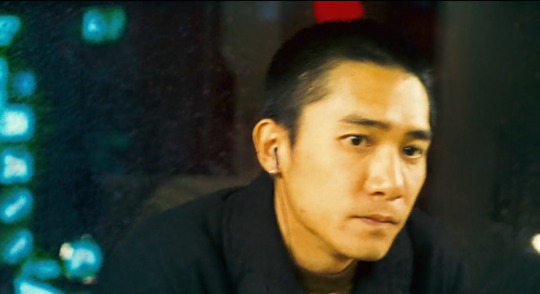

Cinematography
Then there's just a collection of scenes that reminded me very heavily of Happy Together and Wong Kar-Wai's style. I would have added pictures from his other movies for comparison, but Tumblr only lets me put 30 images in a post and I don't want to make a 2nd post.
This scene is specifically from the 1st trailer so I hope they keep it in the show.
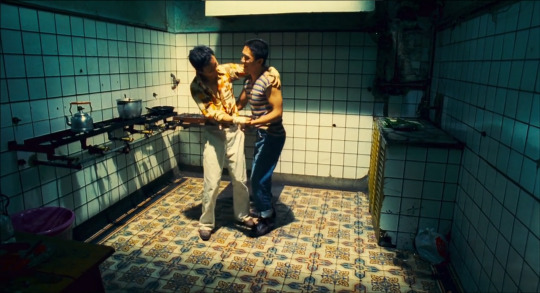

This one I call the inevitability of falling. Both Sand and Fai realize they're fully committed to their decision to take care of Ray and Wing here.


The end title card
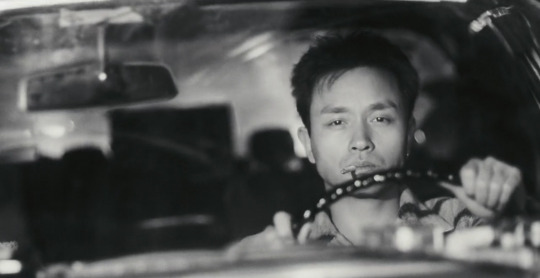

Actually, all of the end title cards give very Wong Kar-Wai vibes. Look at that saturated, neon color grading. Look at the elongated shots. The intense feeling of isolation.


I'm assuming we'll get all the characters at one point, but so far it looks like the end credit cards indicate who the narrator of each episode is.
Anyway, that's it for me! Sorry it was so long and rambling. I tried to organize my thoughts but as I was thinking, more thoughts would pop up and I'd get distracted. If you made it this far, thanks for reading!
#ofts#only friends the series#only friends series#sandray#ofts meta#only friends meta#happy together#i have to post this now because if i dont ill keep writing and ive already spent too much time on this#if anyone has other screenshot comparisons post them#because there are a few more scenes that give me major wong kar-wai vibes#but im too tired to look for them now
451 notes
·
View notes
Photo

Richard Avedon - Donna Mitchell Wearing a Shirtdress by Leslie Fay (Vogue 1971)
#richard avedon#donna mitchell#vogue#photography#fashion photography#vintage fashion#vintage style#vintage#retro#aesthetic#beauty#seventies#70s#70s fashion#70s style#1970s#1970s fashion#supermodel#editorial#vintage vogue
100 notes
·
View notes